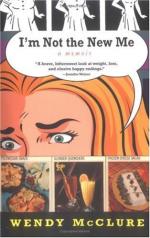The speech was published in full in the “Sangamo Journal” and the editor commented:
“Mr. Lincoln’s remarks on Mr. Linder’s bank resolution in the paper are quite to the point. Our friend carries the true Kentucky rifle, and when he fires he seldom fails of sending the shot home.”
ABRAHAM LINCOLN’S FIRST PROTEST AGAINST SLAVERY.
One other act of his in this session cannot be ignored. It is a sinister note in the hopeful chorus of the Tenth Assembly. For months there had come from the Southern States violent protests against the growth of abolition agitation in the North. Garrison’s paper, the “infernal Liberator,” as it was called in the pro-slavery part of the country, had been gradually extending its circulation and its influence; and it already had imitators even on the banks of the Mississippi. The American Anti-slavery Society was now over three years old. A deep, unconquerable conviction of the iniquity of slavery was spreading through the North. The South felt it and protested, and the statesmen of the North joined them in their protest. Slavery could not be crushed, said the conservatives. It was sanctioned by the Constitution. The South must be supported in its claims, and agitation stopped. But the agitation went on, and riots, violence, and hatred pursued the agitators. In Illinois, in this very year, 1837, we have a printing-office raided and an anti-slavery editor, Elijah Lovejoy, killed by the citizens of Alton, who were determined that it should not be said among them that slavery was an iniquity.
To silence the storm, mass-meetings of citizens, the United States Congress, the State legislatures, took up the question and voted, again and again, resolutions assuring the South that the Abolitionists were not supported; that the country recognized their right to their “peculiar institution,” and that in no case should they be interfered with. At Springfield, this same year (1837) the citizens convened and passed a resolution declaring that “the efforts of Abolitionists in this community are neither necessary nor useful.” When the riot occurred in Alton, the Springfield papers uttered no word of condemnation, giving the affair only a laconic mention.
The Illinois Assembly joined in the general disapproval, and on March 3d passed the following resolutions:
“Resolved by the General Assembly of the State of Illinois:




